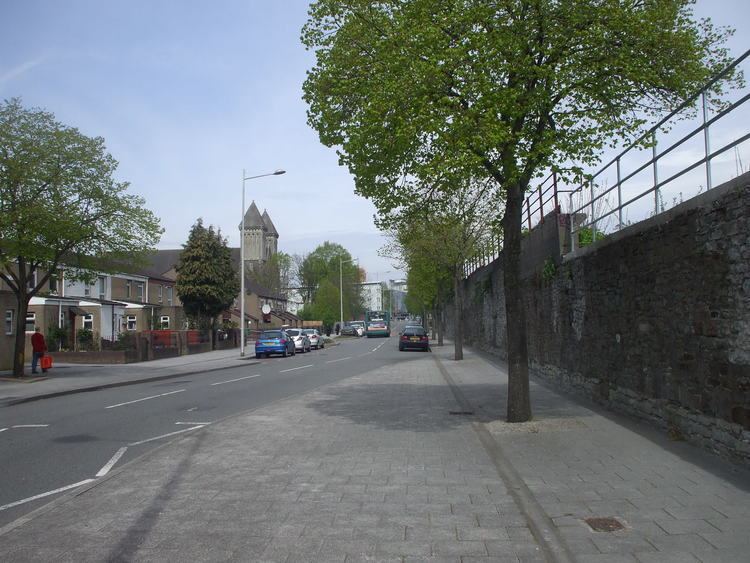 | ||
Bute Street (Welsh: Stryd Biwt ) is a street in Cardiff, Wales. It links Cardiff Bay (previously Tiger Bay) and Butetown with Cardiff city centre. It now has no road number. It runs from the dockside of the Mermaid Quay complex in the south, which is now a pedestrian zone, to the junction of Bute Terrace (A4160) in the north.
Contents
- Map of Bute Pl Cardiff CF10 UK
- History
- Junctions on Bute Street
- Mermaid Quay
- Corys Building 57 Bute Street
- Cardiff Bay Railway Station
- Church of St Mary the Virgin and St Stephen the Martyr
- 97 Bute Street
- Other grade II listed buildings
- References
Map of Bute Pl, Cardiff CF10, UK
History
What is today Bute Street was previously mostly meadow and marshland called Soudrey, the Cardiff south moors. The 2nd Marquess of Bute realised in the 1820s that the Glamorganshire Canal was not sufficient to cope with the demands of the iron trade and initiated a development plan. This plan included the construction of Bute Street as a main road in and out of the docks area and it was completed in 1830. Bute Street used to be part of the A470 road, up until Lloyd George Avenue was opened on 4 October 2000, it is now an unclassified road.
Junctions on Bute Street
Mermaid Quay
The GB£25 million Mermaid Quay shopping and leisure complex was opened in 1999, it was built on the site of the former Welsh Industrial and Maritime Museum, which was opened in 1977 but closed in 1998 to make way for Mermaid Quay.
Cory’s Building (57 Bute Street)
Cory’s Building is a 5 storey grade II listed building situated at the corner of Bute Place and Bute Street. It was built in 1889 and it was built for Cory Brothers & Co. Ltd.
The brothers were John Cory (1828–1910) and Richard Cory (1830–1914). The business included ship's chandlery, brokerage and the sale and export of coal. The company also owned several collieries in Wales. The brothers also became the largest private wagon-owners in the United Kingdom, with over 5,000 wagons.
Now it is planned to be part of a large commercial development called Merchant Place. It is intended to be renamed Cory Chambers, with the external façade being refurbished and a further storey is being added.
Cardiff Bay Railway Station
The Cardiff Bay Railway Station is a Grade II* Listed building, and was built for the historic Taff Vale Railway (TVR) in 1843 and extended in 1860. It was from near this site that the very first train in South Wales ran in October 1840, when the TVR opened the line to Abercynon. Around 1870, the TVR set up its Bute Road headquarters. The station was central to the coal export trade. In 1920, Bute Docks, the TVR and the Cardiff Railway were sold to the Great Western Railway, and for a short time made it the busiest and most important rail system in the world.
Church of St. Mary the Virgin and St. Stephen the Martyr
St. Mary the Virgin and St. Stephen the Martyr is a grade II listed building and was built in 1843.
97 Bute Street
This building is today occupied by HSBC Bank, was built in 1874 for Cory’s, who later moved 57 Bute St
